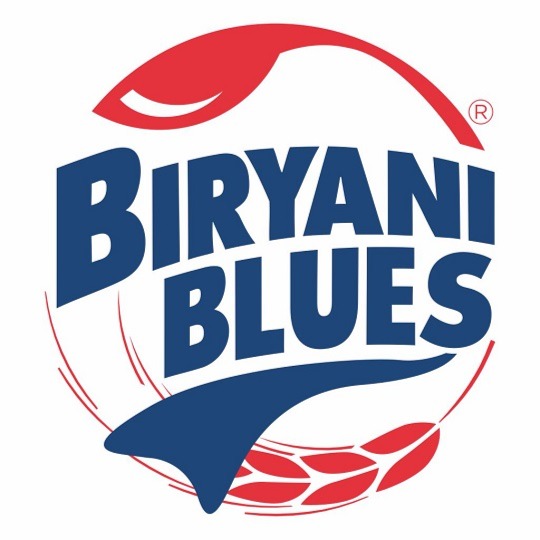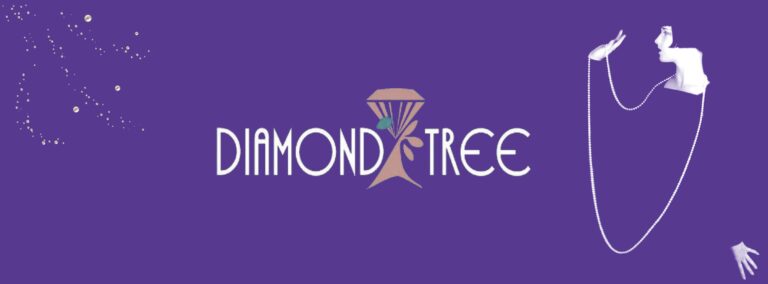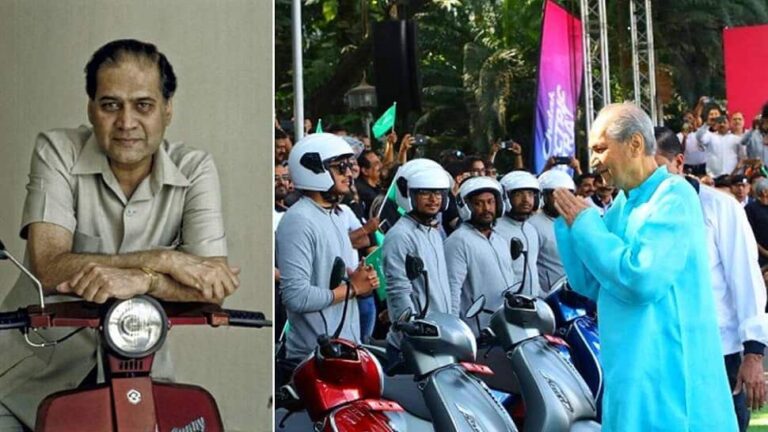Success Story of Biryani Blues | Award-Winning Biryani Restaurant Chain
One knows Biryani Blues as more than just a chain of restaurants. It is seen as the tale of two people whose passion was followed, and a traditional meal was brought to many fresh locations.
The main priorities remain authentic Hyderabadi biryani, seamless operations, and a customer-oriented attitude. Because of this, Biryani Blues has been made a favorite by many.
As the brand is expanded and new outlets are opened, the same taste and experience are promised to be delivered as before.
For biryani lovers, a piece of Hyderabad is brought in every bite, no matter where they live.
Introduction
Biryani Blues is a popular quick-service restaurant chain in India. It focuses on serving one of India’s most loved dishes which is known as Hyderabadi biryani. The brand was started in 2013 by a husband-and-wife team. The couple is Raymond Andrews and Aparna Andrews.

They left their lucrative corporate positions in financial services to pursue their love of food. They sought to introduce Hyderabadi biryani’s genuine flavor to North India, where it was difficult to find.
Raymond and Aparna come from Hyderabad; the city famous for its special biryani cooked using the traditional “dum pukht” method. They missed the authentic biryani while living in Delhi-NCR (National Capital Region).
They often carried biryani back from Hyderabad because they could not find the same taste in the north. This made them realize many others in North India were also missing the real Hyderabadi biryani. This thought inspired them to open Biryani Blues.
| Field | Details |
|---|---|
| Company Name | Biryani Blues |
| Founded | 2013 |
| Founders | Shweta Munjal and Raymond Andrews |
| Headquarters | Gurugram, Haryana, India |
| Industry | Food & Beverage (QSR – Quick Service Restaurant) |
| Specialty Cuisine | Hyderabadi Dum Biryani |
| Business Type | Fast Casual Dining / Cloud Kitchen |
| No. of Outlets | 60+ across India (as of 2025) |
| Popular Offerings | Chicken Biryani, Veg Biryani, Kebab Platters, Raita, Gulab Jamun |
| Target Market | Urban millennials, families, biryani lovers |
| USP (Unique Selling Point) | Authentic Hyderabadi flavors with consistent quality & delivery-focused model |
| Expansion Model | Company-owned & franchised outlets |
| Online Presence | Available on Zomato, Swiggy, and through its own app/website |
| Official Website | https://biryaniblues.com |
| Social Media Handles | Instagram, Facebook, Twitter, LinkedIn |
| Notable Achievements | Among top biryani QSR chains in India; strong brand recall in North India |
Early Days
The first Biryani Blues restaurant was opened in the NCR area as a quick service restaurant (QSR). This model was designed so that delicious food could be served quickly and at reasonable prices.
Raymond and Aparna sought to make their biryani accessible to people beyond jet-setting restaurants, much preferring people’s everyday hotspots. It was harder than it seemed in the early days.
Building a brand-new food business came with a ton of challenges. At the same time, there was an intense focus on quality, processes and efficiency. The couple’s professional journeys in finance allowed for this.
Every biryani was crafted with precision and care, honoring the traditional Hyderabadi recipes.
Growing Bigger
Biryani Blues soon became a household name. They had carved a niche in the business and were people’s favorite due to the affordable flavorful biryanis. The business expanded beyond the NCR region to other cities such as Chandigarh and Jaipur.
Now, Biryani Blues has more than 40 outlets and serve millions of biryanis every year. In a bid to reach more customers, the brand employed a multi store strategy.
In addition to regular restaurants, they opened express stores focused on delivery, cloud kitchens which are exclusively for online orders, and outlets in high-traffic areas like malls, airports, and railway stations.
With this multi-channel or omnichannel strategy, Blues burritos is now accessible everywhere.
The Secret Behind the Taste of Biryani Blues
What sets Biryani Blues apart is its specialization in Hyderabad biryani. It’s rich in spices, fragrant, and considers “dum pukht” to be one of its signature traditions; this refers to the slow, sealed, submerged, meat and rice cooking that retains all the flavor.
The restaurant fills and cooks the handis, earthen pots, which are used to store the biryani. These containers are also beneficial in preserving the freshness of the biryani and they add to the aesthetic.
Customers appreciate the freshness and claustrophobia in each mouthful which feels like home. The restaurant aims to please the customers by making a custom menu centered on different kinds of biriyani to maximize inclusion.
It is an economical meal because the value offered in portion sizes is raised significantly, thus fitting for someone with a hearty appetite.
Using Experience to Build a Strong Brand
The corporate backgrounds of Raymond and Aparna were helpful in forming Biryani Blues. They utilized the skills of systematized customer service, quality control, and process management gained in financial services to make the brand organized and efficient during its growth.
Their approach exceeded the important “culinary delight” touchpoint to include timely delivery, cleanliness, price, and a variety of other operational factors.
Raymond and Aparna aimed for all outlets to serve the same biryani to ensure customers receive the same experience no matter which store they visited.
Biryani Blues Funding and Future Plans
In 2025, Biryani Blues raised $5 million in funding from investors including Carpediem Capital and Yugadi Capital. This new money is helping the brand grow faster. The company plans to open over 100 new outlets in different cities and strengthen its workforce.
Besides expanding stores, the funds are being used to improve the company’s operational and logistical systems. Better supply chains, inventory management, and technology will help Biryani Blues serve customers faster and more efficiently.
The goal is to make Biryani Blues available to even more people across India while maintaining the high quality that made the brand popular.
Financial Success of Biryani Blues
Biryani Blues is not just popular; it is also financially successful. In the financial year 2025 (FY25), the company reached EBITDA-level profitability. This means it started making good money after paying for its operating costs.
The company’s revenue also grew by 14% in the last year, showing that more customers are choosing Biryani Blues. This growth is driven by smart purchasing, better inventory control, and smooth daily operations.
Connecting with Customers
Biryani Blues understands that food is more than just eating, it is about emotions, memories, and culture. The brand connects deeply with customers by serving a dish that reminds many people of their homes, especially those from Hyderabad living in the north.
The care taken in cooking and packaging the biryani, the aroma, and the taste all create a special experience for customers. The brand’s promise to serve “great quality products, at a value for money price, delivered on time, every time” keeps customers coming back.
Biryani Blues Challenges and Achievements
Running a quick-service restaurant chain is not without challenges. The food industry is competitive, and customers have high expectations. But Biryani Blues has carved out a strong place for itself by focusing on authenticity, quality, and customer satisfaction.
The brand’s journey from a small startup in NCR to a well-known name across multiple cities shows that passion, planning, and commitment can make a big difference.
Biryani Blues FAQs
What is Biryani Blues?
Biryani Blues is a quick-service restaurant chain in India that serves authentic Hyderabadi biryani.
Who started Biryani Blues?
It was started by Raymond Andrews and Aparna Andrews, a husband-and-wife team, in 2013.
Why did Raymond and Aparna start Biryani Blues?
They missed the real taste of Hyderabadi biryani while living in North India and wanted to share this flavor with more people.
What makes Biryani Blues special?
They focus on traditional Hyderabadi biryani cooked using the “dum pukht” method in earthen pots called handis to keep the food fresh and tasty.
How does Biryani Blues serve its customers?
The brand uses a quick service model with many outlets, express stores, cloud kitchens, and outlets in busy places like malls and airports.
How many Biryani Blues outlets are there now?
There are over 40 outlets across different cities like NCR, Chandigarh, and Jaipur.
What helped Biryani Blues grow quickly?
The founders’ experience in finance helped them focus on quality, efficiency, and customer service, making the business strong and organized.
What are Biryani Blues’ future plans?
They plan to open more than 100 new outlets and improve their operations with recent funding of $5 million.
Is Biryani Blues financially successful?
Yes, the company became profitable in 2025 and showed a 14% revenue growth in the last year.
How does Biryani Blues connect with its customers?
By serving delicious, authentic biryani that reminds many people of home, and by promising good quality food, fair prices, and timely service.






